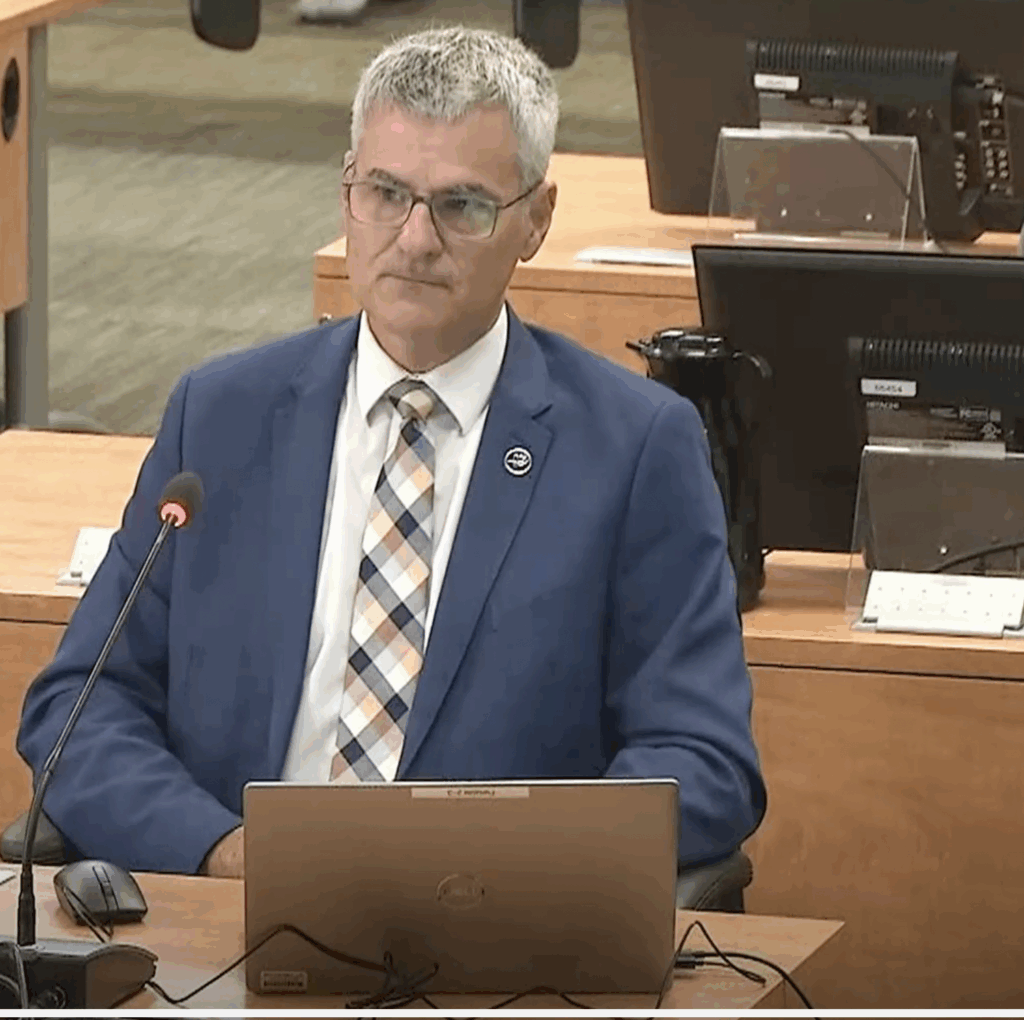Équipe Priorité Québec eliminated in City Council musical chairs
Peter Black, Local Journalism Initiative reporter
peterblack@qctonline.com
With the launch of the municipal election campaign just around the corner, there’s been another round of musical chairs involving familiar city councillors.
The two remaining councillors of Équipe Priorité Québec have jumped ship, each to a different party, effectively putting an end to the formation formerly known as Québec 21.
Stevens Melançon, the current leader of EPQ and councillor for the Chute-Montmorency– Seigneurial district, switched allegiances to Leadership Québec, the new party founded by mayoral candidate, former provincial Liberal cabinet minister and MNA for Louis-Hébert Sam Hamad.
Hamad and Melançon appeared together at an Aug. 13 media event at Golf Beauport to announce the joining of forces. Melançon’s move had been the subject of rumours ever since Hamad made it known he was considering a run for the mayor’s office last year.
Hamad said in a statement: “The arrival of Stevens and his team at Leadership Québec marks an important step in building a strong team, attentive to local communities and capable of delivering concrete results. Their pragmatic and respectful approach aligns perfectly with ours.”
For his part, Melançon, a councillor since the 2017 election, said, “By joining forces with Leadership Québec, our party has chosen to contribute to a broader, unifying movement rooted in the concrete concerns of citizens. We share common values: proximity to citizens, pragmatism and a desire to deliver results. Under the leadership of Sam Hamad, a man who listens, works on the ground, and delivers results, we will have the means to achieve more.”
Not all the EPQ “team” is joining with Hamad. Eric Ralph Mercier, a former leader of the party, may be joining another upstart party, Respect Citoyens. Although Mercier was on vaca- tion and could not be reached for comment, party leader Stephane Lachance confirmed in an interview with the QCT that Mercier would be running for Respect Citoyens in the des Monts district of Charlesbourg he has represented since 2021.
Mercier, son of longtime Charlesbourg mayor Ralph Mercier and a former Liberal MNA, was more cryptic in a statement issued last week. “It is with regret that I have decided to leave Équipe Priorité Québec in order to pursue my political commitment with a view to running again in the next election. I remain committed to serving the citizens of my district with integrity and conviction.”
Lachance, however, said Mercier would be making an announcement about joining Respect Citoyens soon, and the delay is out of consideration for the staff who work for ÉPQ, the second opposition party at City Hall.
Lachance, who owns a Lévis- based event organization business, is a former candidate for the Quebec Conservative Party in the riding of La Peltrie, which includes Shannon. He said Mercier shares the values of Respect Citoyens, particularly regarding the city’s finances.
Lachance is also strongly opposed to the city’s tramway project. “Our major project is to make the [Réseau de transport de la capitale] efficient and also that the people of Quebec will appreciate the service.
“This organization already has major problems,” Lachance said, without taking on a tramway system or rapid bus (SRB) network as proposed by Hamad.
Should Mercier run for Respect Citoyens, that would make 16 candidates already committed to running for the party.
It is not known whether Mercier will sit as an independent until the end of his term. If he does, ÉPQ will vanish from City Hall. The party, then called Québec 21 under leader and mayoral candidate Jean-François Gosselin, elected four councillors in 2021.
Gosselin, a strong opponent of the city’s tramway plan, joined the ruling party as an associate executive committee member responsible for sports and recreation. He is not running again.
The fourth Quebec 21 councillor, Bianca Dussault (Val-Bélair), joined Mayor Bruno Marchand’s Québec Forte et Fière (QFF) party at the same time and is running under that party’s banner.
The addition of Melançon brings the total number of Leadership Québec candidates to nine, including two recruits from Quebec d’abord, the successor to former mayor Régis Labeaume’s machine that ruled the city from 2009 until the 2021 election.
Isabelle Roy, councillor for the Beauport district of Robert-Giffard, and Louis Martin, who represents Cap-Rouge–Laurentien, jumped to Hamad’s party in the spring.
Québec d’abord is now down to only one incumbent councillor, besides party leader Claude Villeneuve. Patricia Boudreault- Bruyère, councillor for Neufchâtel-Lebourgneuf, announced last week she would not seek another term.
The sole incumbent running again for Québec d’abord is Véronique Dallaire in the Les Saules–Les Méandres district.
The party has found candidates for only three districts besides the Maizerets-Lairet district Villeneuve won in 2021.
As for QFF, it has candidates in all 21 districts, including seven incumbents. Mayor Bruno Marchand has said he will run in a district with a colistier or running mate. He has not said which district that would be, since all now have candidates for QFF.
In 2021, he ran in the Montcalm–Saint-Sacrement district, which the party won. Running mate Catherine Vallières-Roland became the councillor for the seat since Marchand had won the race for mayor.
Municipal elections take place all across Quebec on Nov. 2.













































